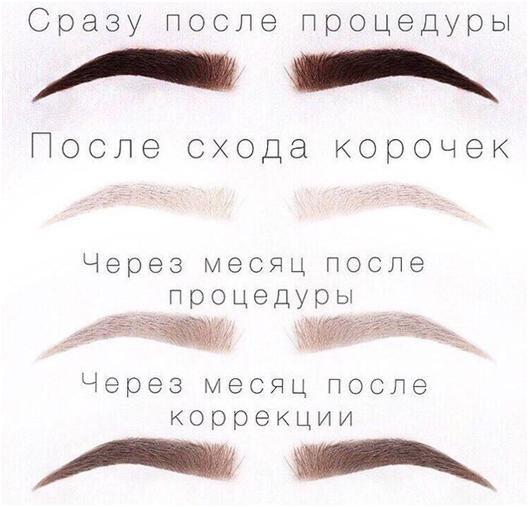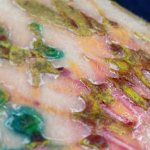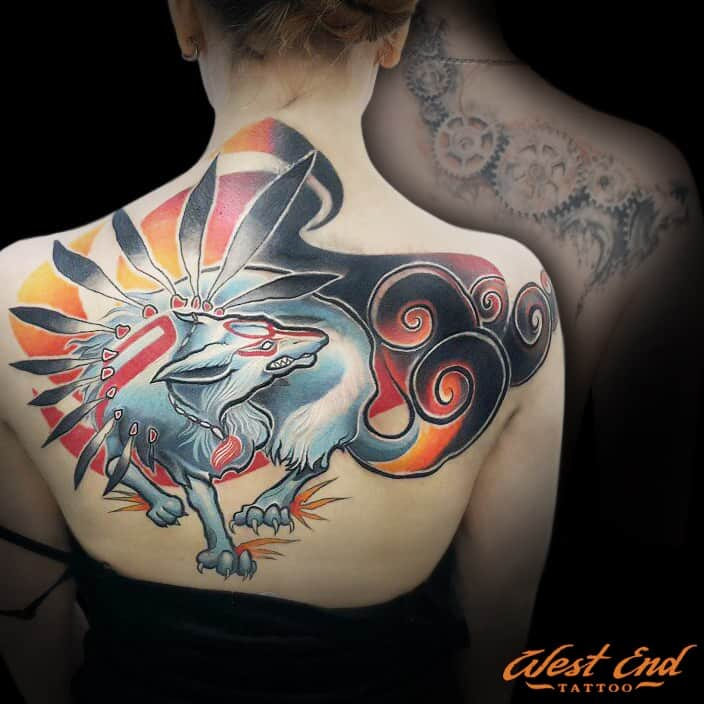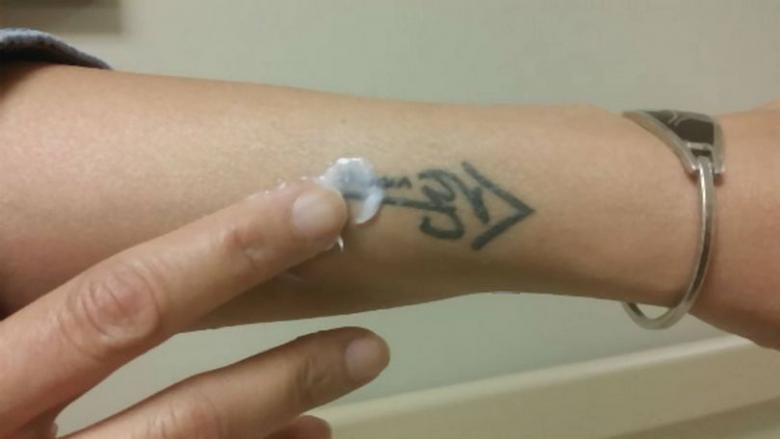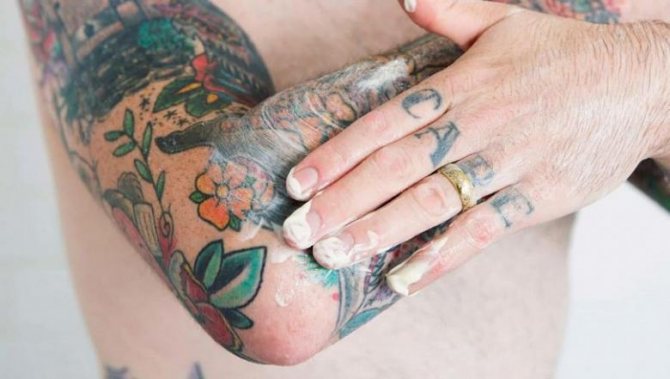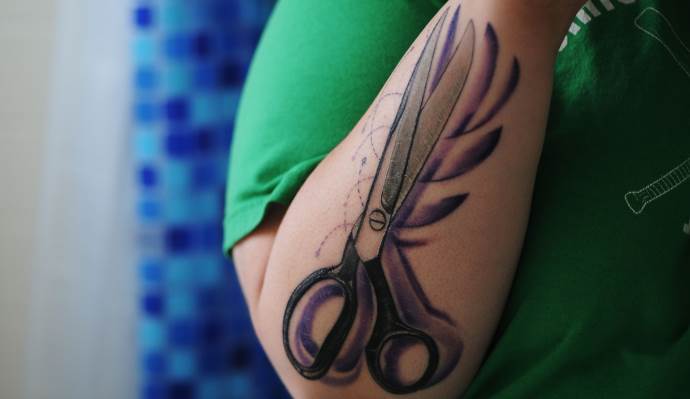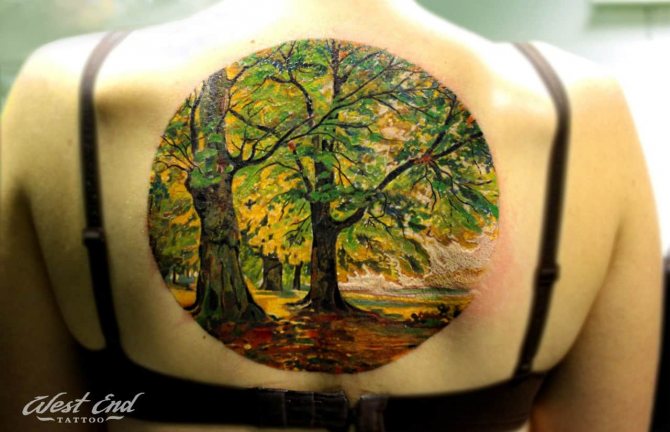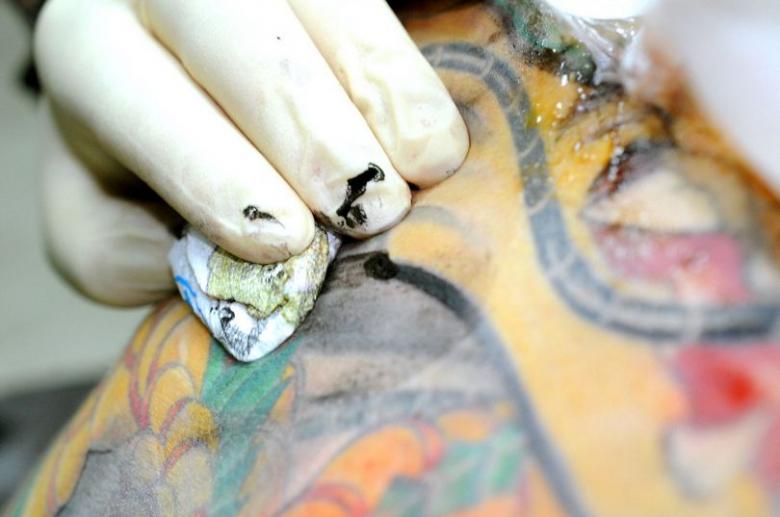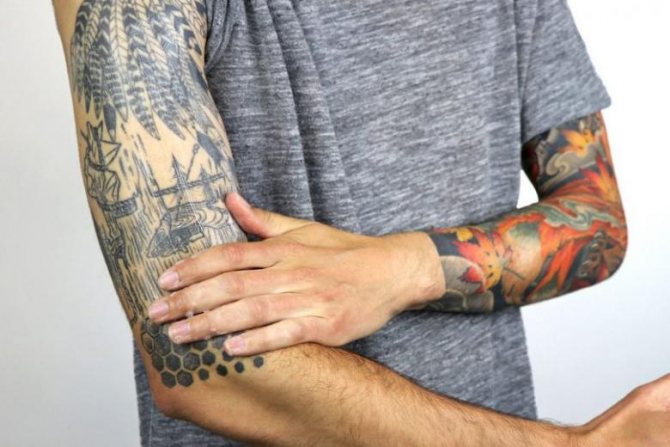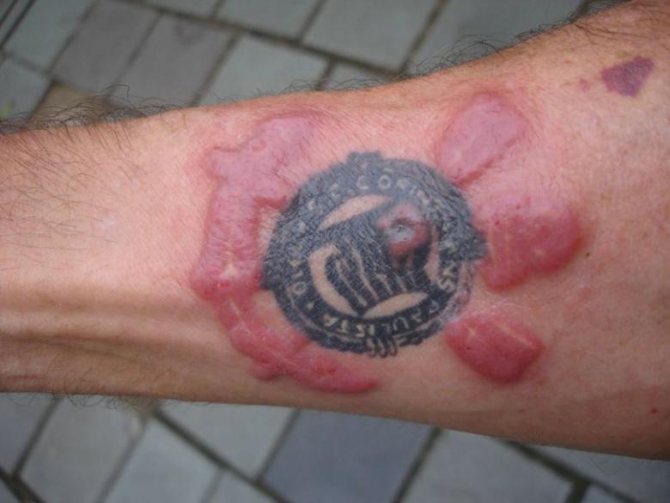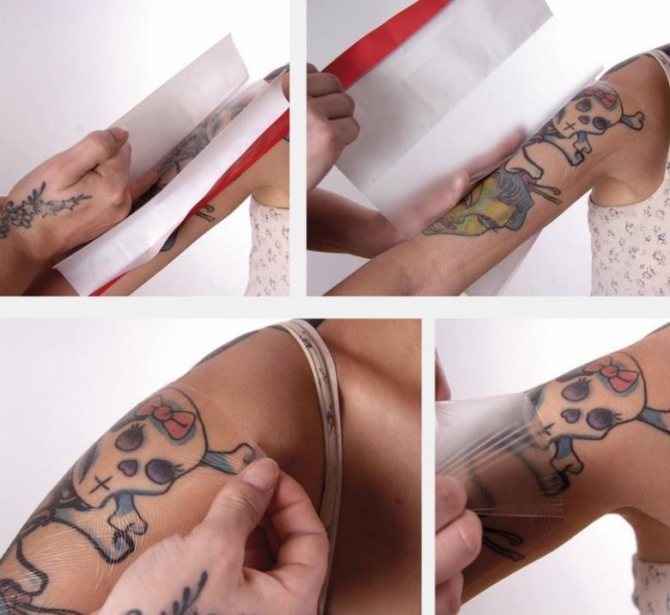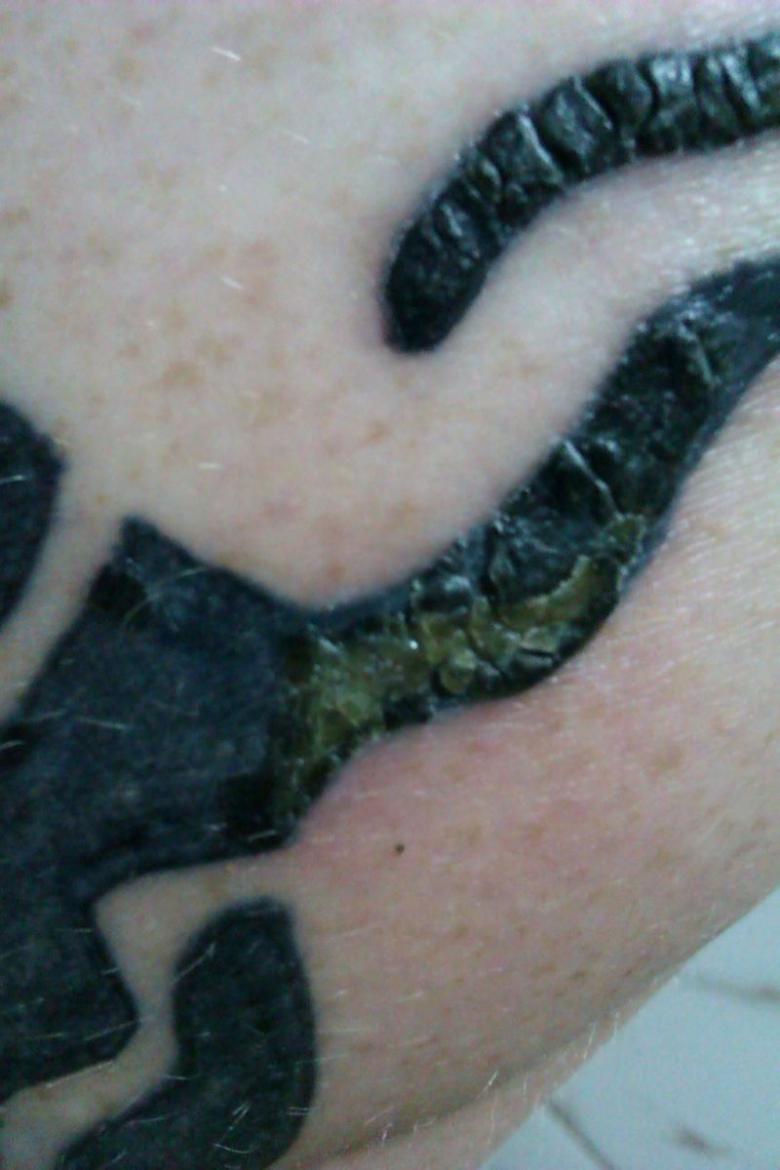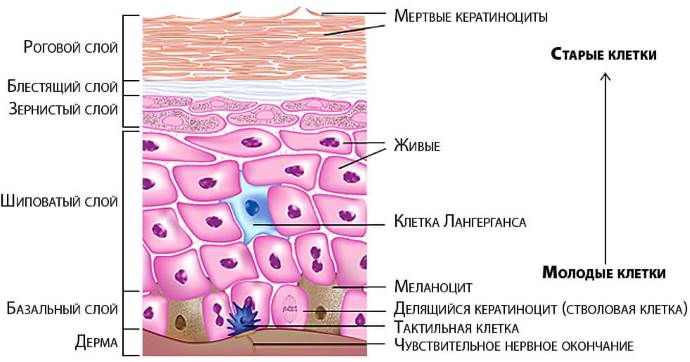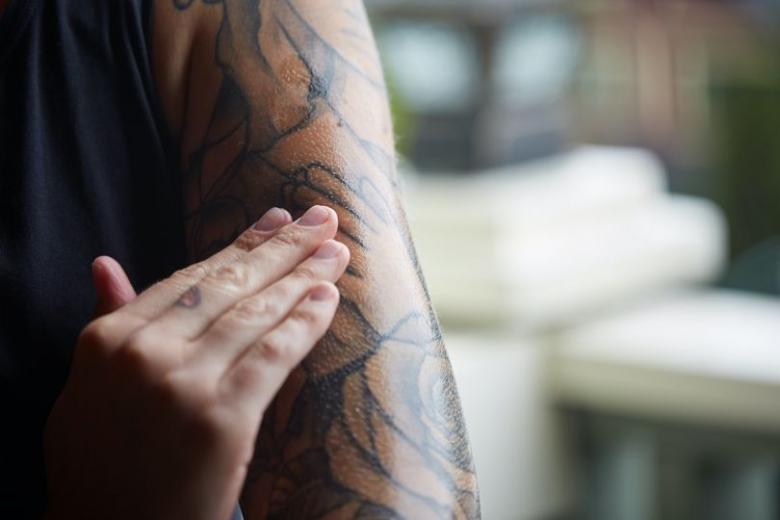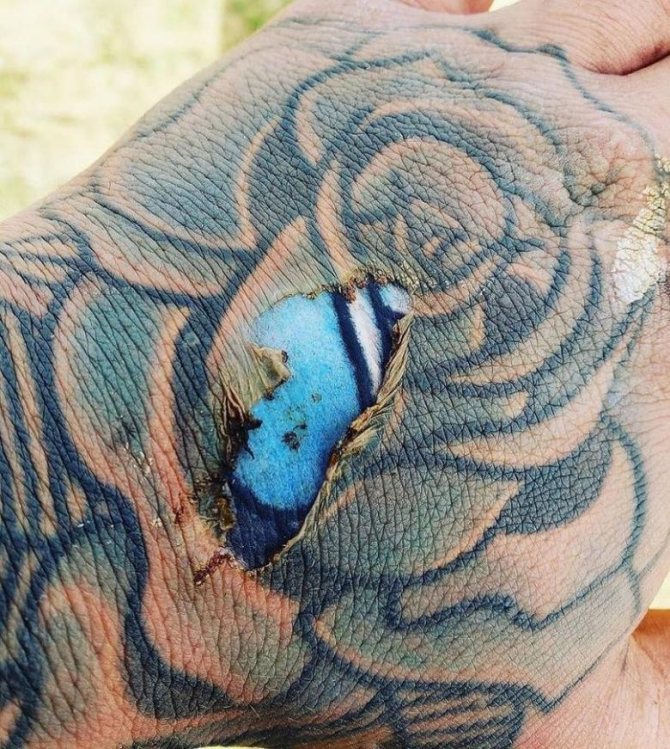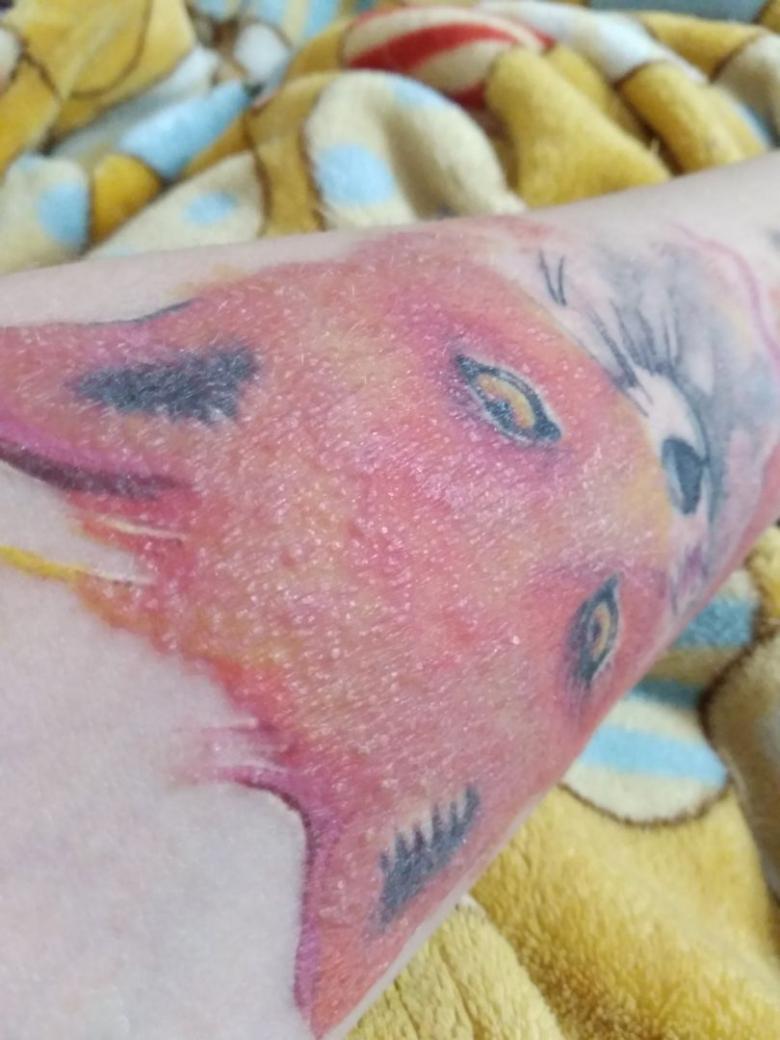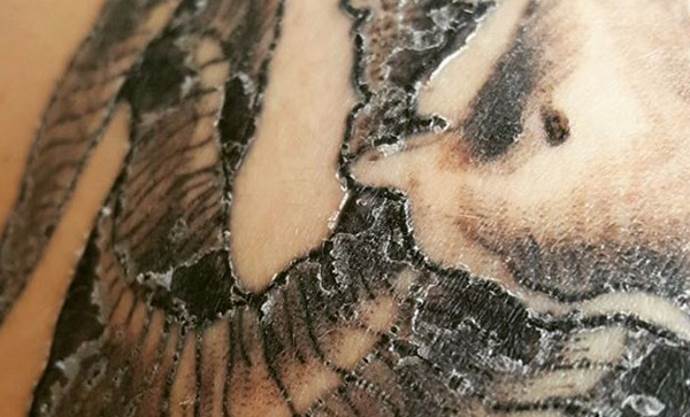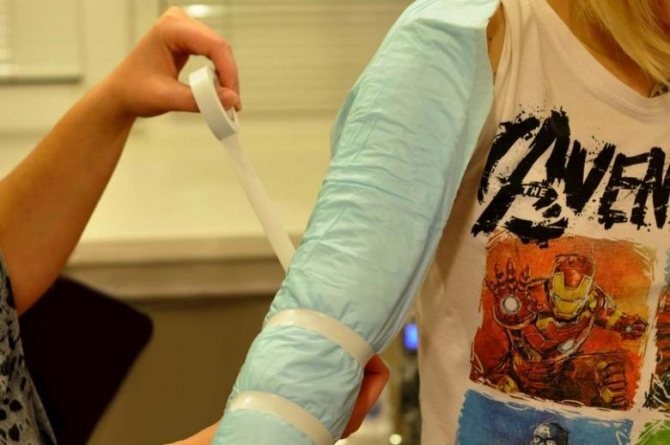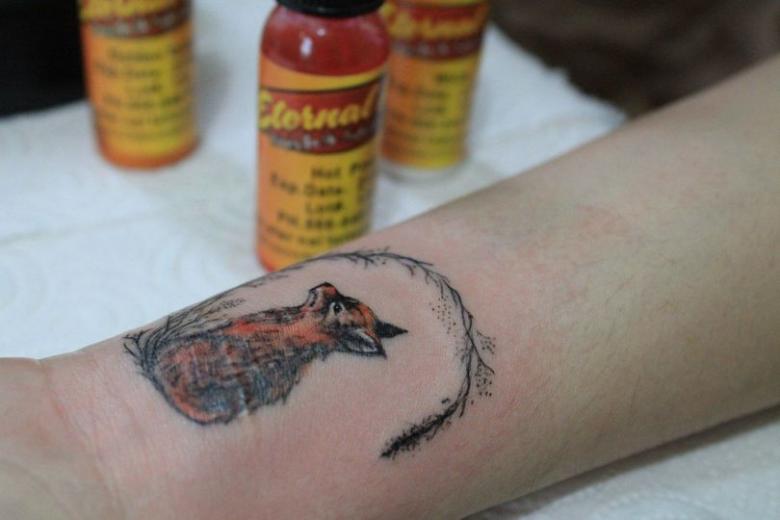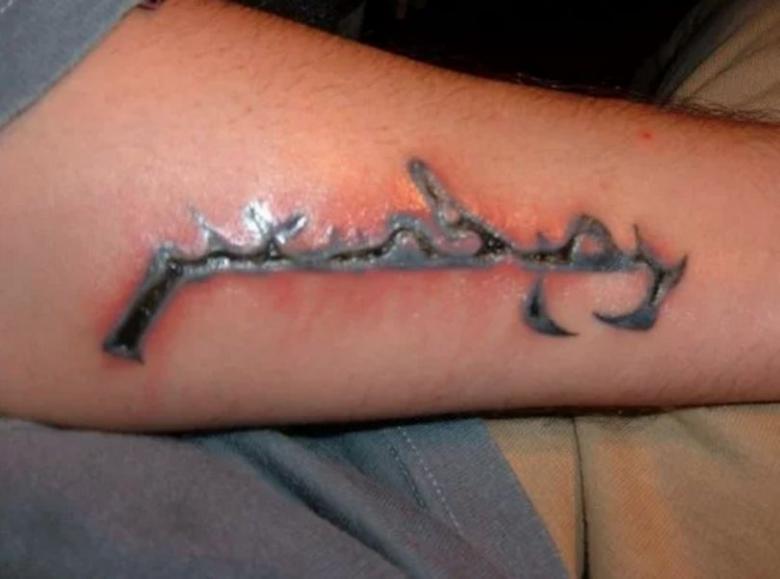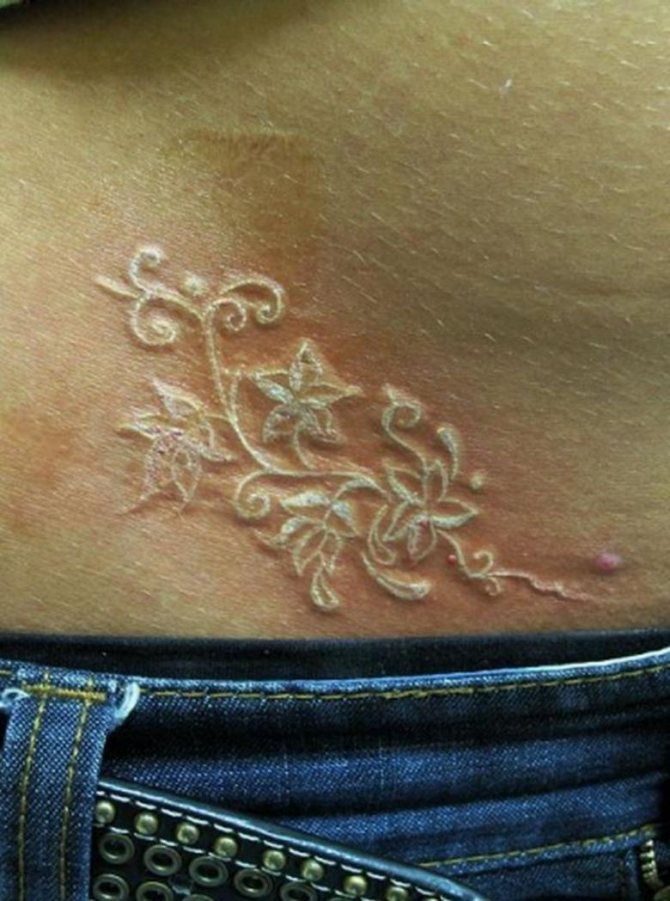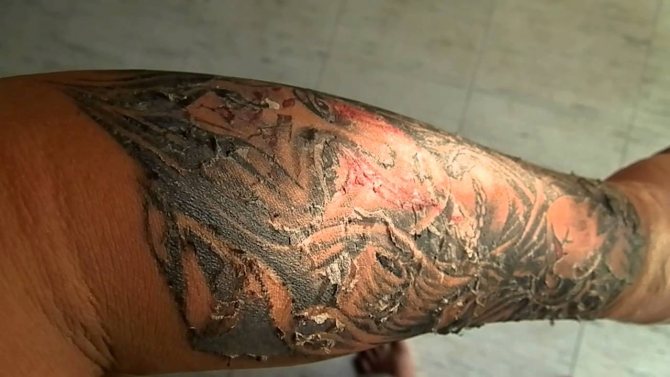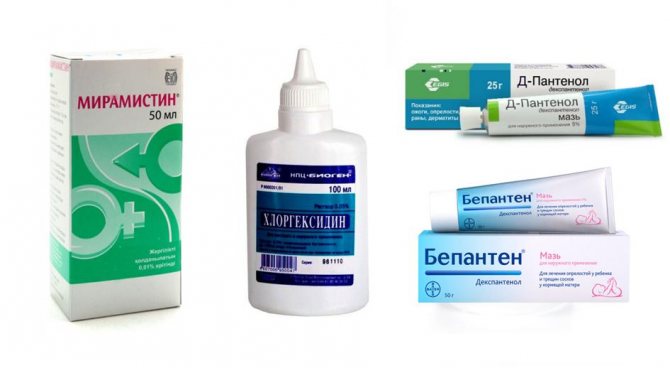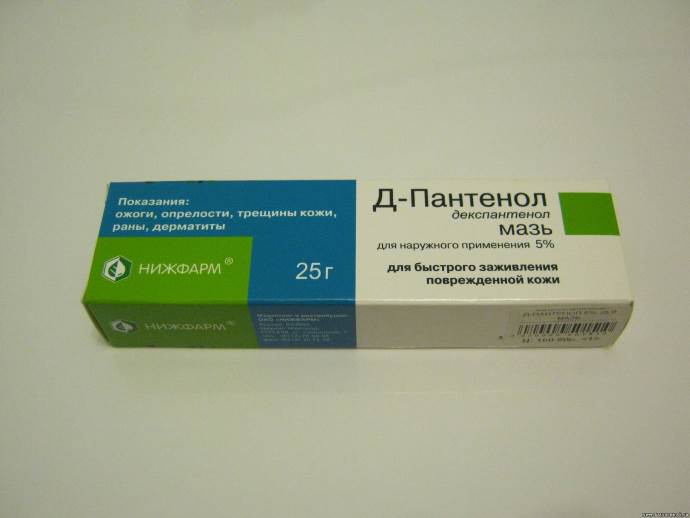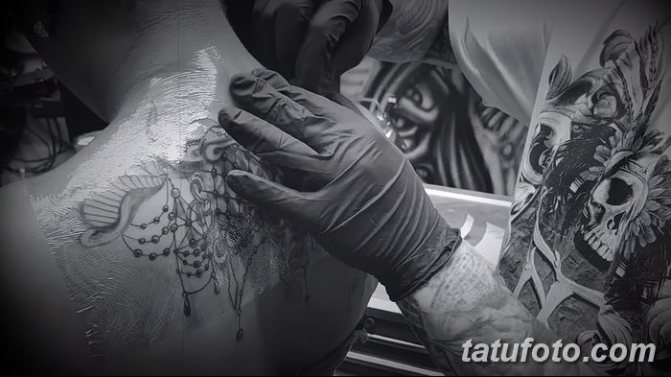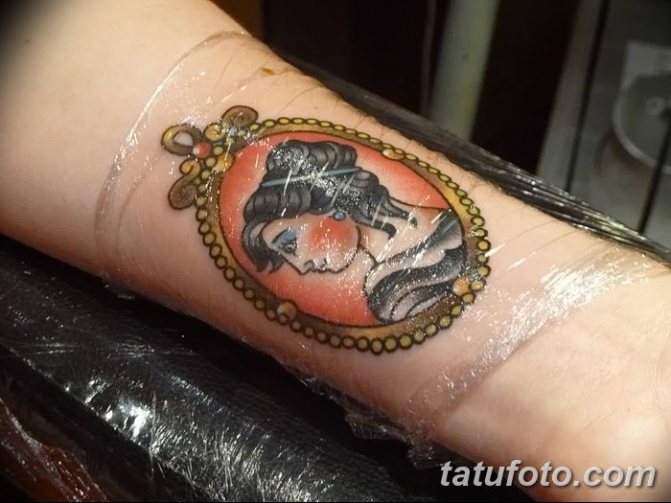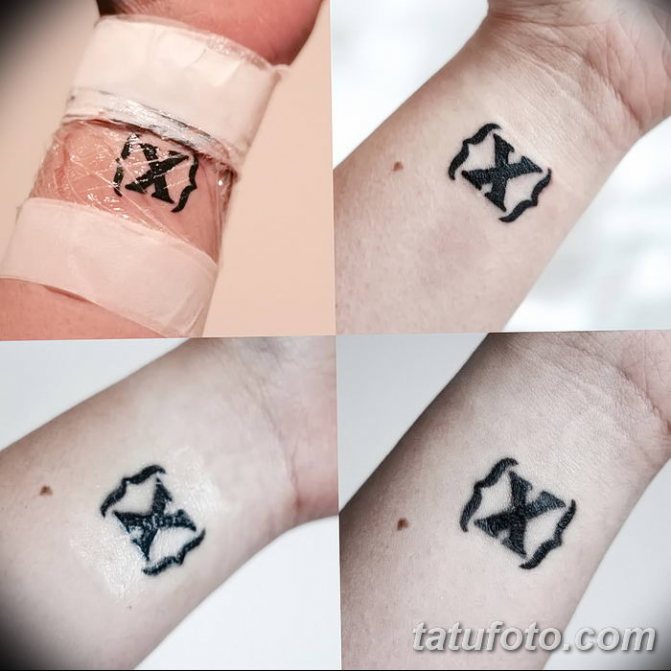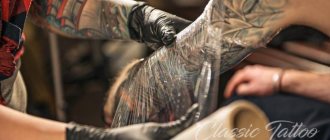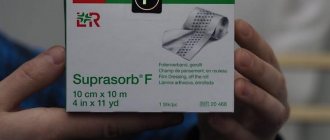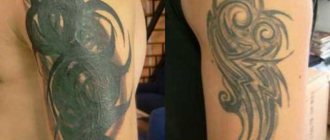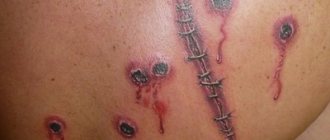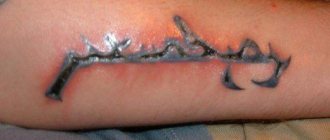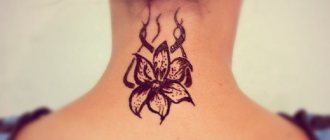Anyone who has used the services of a tattoo artist at least once has noticed that the tattoo peels off as it heals. Many (especially beginners) worry about this and often ask the master, "Is this normal?" First of all, calm down. Yes, it really is normal. From this article, you will learn what to do when a tattoo starts peeling, and why it happens in the first place.
If you're a man, you'll understand the analogy to growing a beard. At first, the hair on the chin looks uneven and liquid, in addition, everything is terribly itchy. With time, however, the beard grows back, becomes soft, and the itching disappears. The same will be true for your tattoo, which is flaky and bothersome: just wait out the period of discomfort by helping yourself with special products.
Even if your skin peels off with the paint, and your tattoo looks so unaesthetic that you yourself are afraid to look at it, this is a good sign. This phenomenon is part of the natural healing process.
When peeling begins
When does a tattoo begin to peel? It depends on the individual. Some have skin peeling starting in a few days after a visit to the tattoo parlor, some have it starting in a week. This is only determined by genes.
If you know that the new tattoo will inevitably peel off, you'll take this natural healing phase easier. However, don't go to extremes and spend all your time examining the tattoo, waiting for the epidermis to peel off. All in good time, rely on your body and find yourself something interesting to do.
The tattoo will flake off in about a week. In areas such as the wrists and elbows, for example, the peeling of the epidermis lasts longer, while in softer parts of the body it lasts less. A healed tattoo may begin to peel again. However, it doesn't look as catastrophic the second time around and goes much faster.
Signs of complete healing
After 7-10 days, you can see that the tattoo is completely healed. The crusts are completely removed, the pattern becomes clear and begins to show. There is no shine or irritation on the surface of the epidermis. However, it takes about a month for the skin to recover.
Tattoo healing is a lengthy process that should be approached responsibly. If you do not use moisturizers during regeneration, there is a risk of significantly deteriorating the quality of the design. It will then have to be corrected, and the skin will have to be rebuilt. Among the more dangerous consequences of improper care is suppuration with the development of blood poisoning. In addition, it is worth remembering that the tattoo is a permanent pigment. If its quality deteriorates after the application, even with a laser it can not be completely removed.
Everyone who at least once resorted to the services of a tattoo artist, noticed that the tattoo peeled off in the process of healing. Many (especially beginners) are worried about this and often ask the master, "Is this normal?" First of all, calm down. Yes, it really is normal. From this article, you will learn what to do when a tattoo starts peeling, and why it happens in the first place.
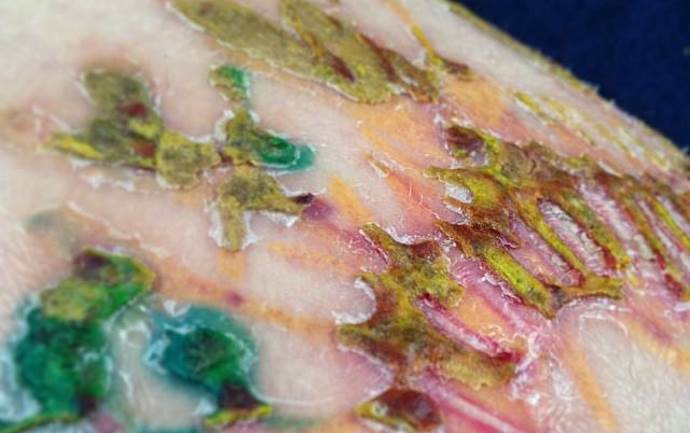
If you are a man, you will understand the analogy to growing a beard. At first, the hair on the chin looks uneven and liquid, in addition, everything is terribly itchy. Over time, however, the beard grows back, becomes soft, and the itching disappears. The same will be true for your tattoo that peels and bothers you: just wait out the period of discomfort by helping yourself with special products.
Why is your skin peeling?
The skin is a huge and very important organ that is constantly renewing itself. Every day we lose thousands of epidermal cells without noticing it. However, a fresh tattoo that begins to peel off allows us to see this process firsthand. To better understand how natural (and forced) skin renewal occurs, it is advisable to study its structure (see photo).
Even if the flakes of dead skin are not just white, but colored, this does not mean that the tattoo will fade, having lost most of the used ink. The dye is too deep and will not be able to peel off with the epidermal cells. Exfoliation will in no way damage your image.
The second stage
On the second day of the tattoo's healing, the bloodstream disappears and the swelling goes away. The skin at this stage shrinks, becomes dry and dehydrated. Why does this happen? The reason is that the ink is perceived by the body as a foreign body. It takes time for them to take root and not be rejected. During this period you should actively treat the drawing with healing ointments. It is recommended to avoid body contact with clothing, as friction does not promote healing of the tattoo. If you need to go outdoors, it is advisable to wrap the place of application with protective or ordinary food film. At home during the second stage of healing it is better to leave the tattoo open to let the skin breathe.
What to do and what not to do
During the healing of the tattoo (including when it peels) it is necessary to carefully observe the rules of care for it. Otherwise, you may prolong the healing process or even make your condition worse.
There are two important things to remember DO NOT
When peeling a tattoo.
- Do not tear off or pull on loose skin.
If you don't heed this advice, you will do the worst thing you can do during the tattoo healing process. Sometimes you only think that the skin has fallen behind and is ready to rip off, and it may be attached to living cells. In this case, you run the risk of ripping it off along with some of the ink, which means that the tattoo will be uneven in color. The conclusion is this: let things run their natural course, don't interfere with the process. - Don't scratch the tattoo when it itches.
Yes, it's not easy, but otherwise you risk damaging the tattoo area again. In addition, your nails provide shelter for thousands of germs, which means that scratching the damaged skin could cause an infection.
How to help a peeling tattoo? Experts make the following recommendations.
- Keep your tattoo moisturized
Use drugstore lotions and ointments that contain the maximum beneficial substances that help restore the lipid barrier (and therefore the protective functions) of the skin. In addition, by moisturizing you will give the tattoo a more decent look and get rid of the itching. Apply tattoo cream as often as possible. - Keep your tattoo clean.
You can use a special soap for this. A clean tattoo heals more easily, stops peeling quicker, and is usually hassle-free. - Be patient
Alas, there's no other way to get a spectacular tattoo - big or small, black and white or colored. Any permanent mark on the skin will cause it to peel. Deal with it and be patient for a little while.
Sometimes (quite rarely) tattoos don't heal too well and become uneven in color. In this case, contact your master, he will carry out the necessary correction.
Watch the video on the subject:
In the decades since the art of tattooing became widespread, the process of drawing on the skin is no longer such a symbolic ritual. If in the past a tattoo was invested with great meaning and it could tell a lot about a person, now it is often just a type of appearance modification. That's why the questions concerning the healing and care of a fresh drawing are so worrying for all its owners.
The third stage
Usually on the third day, a crust is formed on the tattoo. The skin begins to peel and white or colored flakes appear. The fact is that the ink remains in the lower layer, the dermis, and the epidermis, that is, the top layer, is renewed and restored after the procedure. Such a reaction of the body provokes a strong itching and unpleasant feelings. In no case you should not scratch the tattoo and rip off the crust. This will significantly damage the pattern and increase the healing time. You can gently pat your palm on the body and continue treating the area with the ointment. The antiseptic solution "Sinaflan" will also help reduce itching. During this time, it is advisable not to go to the gym, the solarium, limit the time spent in the open sun and reduce physical activity. Do not be frightened if the tattoo fades and loses its brightness. This will pass after the tattoo has fully healed.
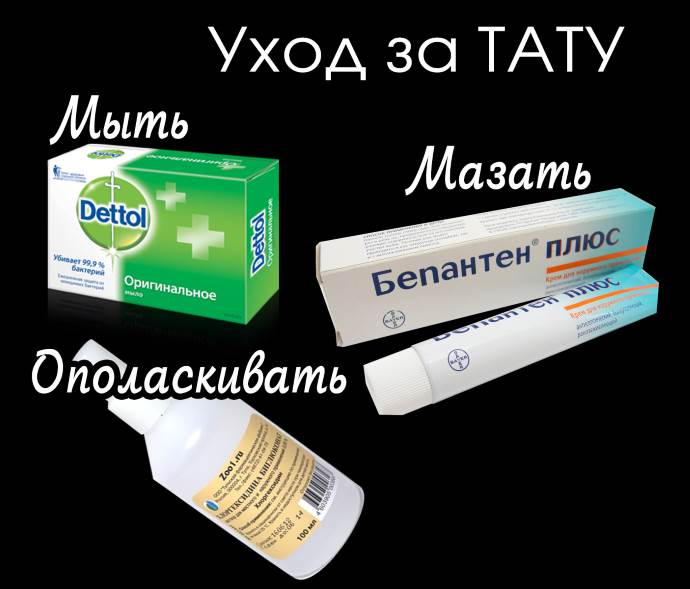

Time of healing
Tattoo healing time is individual for each person and depends on the following factors.
Place of application
The quickest way to heal is the buttocks, chest and abdomen. The recovery period takes from 4 to 7 days. Areas with a small amount of subcutaneous fat (back, ankle, neck) can heal up to 2 weeks.
Tattoo volume
Large tattoos are usually applied in several stages, so full healing comes in a month. This is especially true for realistic portrait photos or blackwork tattoos, where a large amount of ink is used to completely shade the design. Small and medium-sized tattoos recover faster because the body area is small.
Thickness and depth of lines
Thin neat lines do not traumatize the skin much and recover faster, deep, wide and thick lines take longer: 1-2 weeks.
To determine whether a tattoo has healed, you can run your hand over it. If the pattern is homogeneous, without roughness and flakes - the recovery process was successful.
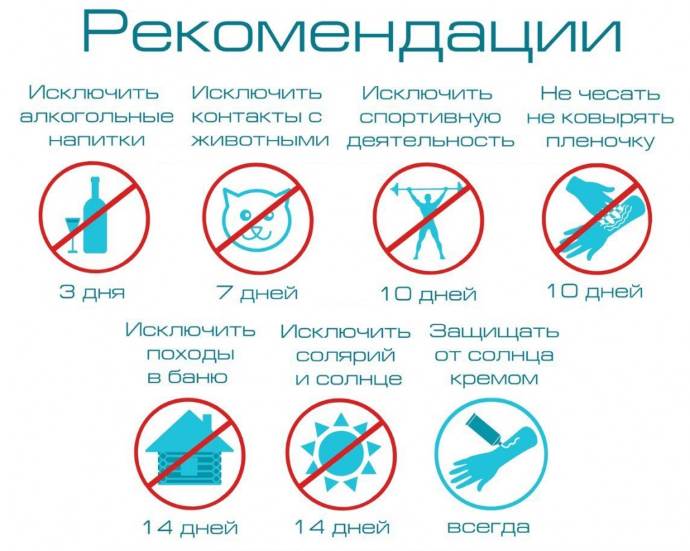

How does the tattooing process work?
Thin moves synchronously with great speed, penetrating into skin to the depth of 2-8 mm, at the same time pigment is inserted, which is captured by body cells and remains in them. Excess paint is removed from the surface and excreted by the body on its own, which can be noticed in the first 1-2 after the tattoo. On the skin and a special bandage remains a special transparent liquid with a small amount of pigment, which, according to the experienced masters of tattooing, is an absolutely normal phenomenon. At the same time the reaction of the body is manifested in the itching, which begins to bother the person at the moment of tattoo healing.
How to avoid a paint shedding?
Tattooing is an intervention, which is accompanied by lymphatic discharge, local fever and swelling. After the procedure, the artist lubricates the skin with a healing ointment with antiseptic and applies a special compress. During the healing process it is necessary to take thorough and proper care, so that no crusts form. If they have appeared, they must not be ripped off, otherwise gaps in the pattern will not be avoided.
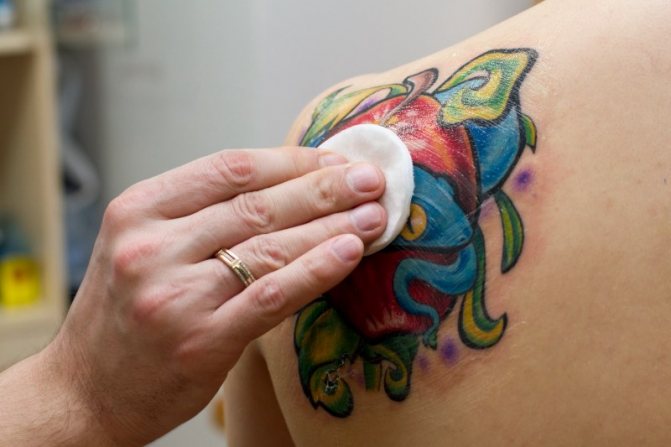

After 5-8 days, the tattoo begins to peel, similar to a sunburn, and itch. During this period, the skin should not be exfoliated or peeled off. It must come off naturally. The colors may fade somewhat, but after three weeks they will be full.
During the recovery period, it is necessary to use an ointment that will protect the skin from drying out. Apply the ointment in a thin layer so as not to interfere with the breathing of the skin. The duration of healing depends on the characteristics of the body, skin type, the place where the tattoo was performed. Usually, complete healing occurs after 1 month, not the least role played by climatic conditions. The main requirement for a good result is to ensure proper care.
Tattoo on the body - a permanent image on the skin, made with a machine with special needles and professional paint, entering under the skin. Today, the tattoo is the most common way of self-expression, both among adults, teenagers and young people.
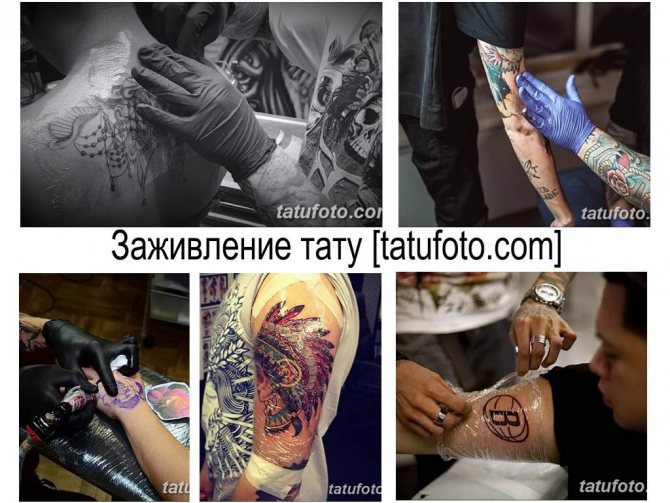

What is the cause of the itching?
To answer the question of why a tattoo itches, it is necessary to understand the causes and mechanism of itching itself. This process is the removal of the keratinized layer of skin. The body itself signals us that we need to get rid of dead cells, as their independent rejection takes longer and is not particularly effective. A fresh tattoo itches, which indicates an active skin healing process, when the damaged cells of the upper layer of epithelium are replaced with new ones. However, we should not forget that you should not always follow reflexes. If you start scratching the tattoo in the first days of healing, you can rip off the crust that has appeared on the skin, thereby not only bringing infection into the wound, but also getting the opportunity to earn unsightly scars.
Creams for tattoo healing
There are commercially available creams and ointments that can be used to care for a fresh tattoo. They are sold in any pharmacy and are designed to regenerate wounds. Their composition necessarily contains moisturizing components, as well as anti-inflammatory and antibacterial active ingredients.
- Ointment based on methyluracil is a drug to stimulate regeneration processes. It also has anti-inflammatory activity.
- D-panthenol is a cream based on dexpanthenol. It accelerates wound healing and also moisturizes the deep layers of the dermis.
- Levomecol is one of the most well-known preparations for treating wounds. It contains the antibiotic levomycetin, which has a prevention of suppuration.
There are also on sale special films for healing tattoos . The instructions for use indicate that such a film is applied for 5-8 days and does not require additional procedures. It protects the skin from water, sun and bacteria.
To scratch or not to scratch?
When a tattoo itches a lot, it is worth to make a fist of your will and not give in to your desires. It is necessary to follow all the advice and recommendations of your tattoo-master, use special healing ointments and in no case be allowed to expose the skin to direct sunlight.
The process of full regeneration of the skin takes 3-4 weeks, but the strong itching is already 10-14 days from the time of the drawing. All this time you can not traumatize the healing area of the body, even if the tattoo itches unbearably strongly.
According to the reviews of experienced amateurs of the appearance transformation, the discomfort during the healing is incommensurably small problem in comparison with the joy of the done tattoo. Some state that it's even enjoyable and exciting, because there is an opportunity to fully experience the process. With the right care, the finished tattoo will not only be as you conceived it, but in addition to this and for a long time will not change.
Contraindications in the days of healing
In the process of tattoo healing will have to observe some restrictions, so it is worth to think in advance about the timing of its application. There are a few rules about which the master warns after the procedure:
- Do not visit baths, saunas, solariums and swimming pools, do not sunbathe for 3 weeks;
- Until the tattoo heals, avoid physical activity;
- Refuse alcoholic beverages and certain medications;
- Do not take a bath - only a warm shower, pre-protect the tattoo with cream and film.
It is not recommended to apply a tattoo in too hot weather.
The skin is especially sensitive to direct sunlight and can also discolor the paint. The summer period is also the most optimal time for the development of bacterial infection, which can lead to dangerous consequences.
Itching of a healed tattoo: causes and solutions
But what to do if a tattoo that has already healed itches? There may be several reasons for this. The most common is infection and skin irritation. It can also be an allergic reaction. If the tattoo itches, and redness or pimples appeared, the surest solution is to visit a dermatologist and allergist. In not all cases, your tattoo artist may know the reasons for the itching if the tattoo has already healed. Sometimes a healed tattoo itches after exposure to ultraviolet light. The fact is that the paint contains certain metal chemical compounds that can interact with sunlight. As a rule, the colors black, blue and purple are perceived by the body much easier than other bright colors. It is worth noting that it will require much more reverent care for tattoos made using red and orange paint, because the components that make up it, much more actively interact with ultraviolet light. That is why it is recommended to always use a cream with a high SPF-protection when in the bright sun. Thanks to this, you can not only avoid unpleasant feelings, but also prolong the brightness and durability of the picture. With prolonged exposure to the sun, the outline begins to fade, and the colors become duller. It is unlikely that lovers of tanning and tattoos will be able to combine both of these hobbies - one will necessarily have to give up.
This is the most unfortunate case for self-treatment, because no one will tell you for sure for what reason the allergy began and what exactly the component of the paint is reacting to the body. Before going to the doctor will not be superfluous to learn from his master the manufacturer of the paint for tattoos. Knowing the composition, the doctor will be much easier to determine the cause of irritation. But do not worry - a competent specialist will write a prescription for the necessary medications, and the problem will disappear forever.
THE LONGEVITY OF YOUR TATTOO DEPENDS ON YOUR CARE FOR THE MOST IMPORTANT FIRST DAYS AND WEEKS!
- Do not lubricate your tattoo with petroleum jelly, cream containing lanolin or ointments containing petroleum products! In general, do not use anything other than what was given by the master!
- Do not use alcohol-containing liquids (do not wipe with alcohol, peroxide and other aggressive acids and alkalis)!
- Do not rub, scratch or scrape the tattoo!
- Do not expose tattoo to direct sunbeams, do not bathe in the open and public water, do not visit bathhouses, saunas and hot baths or showers during the first 21 days!
- During the first 2-3 days, exclude from your diet any products which increase blood pressure: alcohol, coffee, tea, Red Bull, drugs, coca-cola, tea, paracetamol, aspirin, etc.!
- Avoid sudden physical exertion for the first 3 to 5 days
Make sure your clothes that are in contact with your tattoo are clean and soft (no synthetics or wool!).
After the procedure is completed, the tattoo is smeared by the master with antiseptic-healing ointment and a compress is applied for 6-12 hours. Tattooing is considered a minor surgical intervention, so the first day there may be some lymphing, swelling and local increase in skin temperature.
Wash your hands with soap and water! After removing the compress from the tattoo - gently wash it with cool-cold water, using intimate hygiene gel or baby cream soap (as a last resort, any liquid soap, but not lumpy and not shampoo or shower gel). Never use a washcloth for rinsing! Air dry for a few minutes, blotting with a clean paper towel (not a kitchen towel or absorbent cotton or gauze). Then gently, without rubbing, apply a thin layer of ointment (blot the excess ointment with a clean paper towel). After an hour, rinse the tattoo again, smear a slightly thicker layer of ointment and apply a bandage. After 5 hours, repeat the procedure - remove the bandage, rinse, apply cream, rinse after an hour and apply the bandage. An hour before bedtime the procedure should be repeated and the bandage should be put on for the night. In total, there should be 2 bandages during the day and 1 at night with breaks of an hour in between. These procedures should be performed for the first two days. On the third day, do not apply a bandage, but continue to wash and lubricate a thin layer of ointment 3 times a day. Apply another bandage on the fourth night for the last time. Do not use any more bandages, but sleep in a clean cotton t-shirt or shirt so you don't smear the cream on the bed. Continue rinsing and dabbing the tattoo until it begins to peel off. Once it has completely peeled off, move on to the next cream (given by the master) and dab twice a day for the next two weeks.
During the healing process, with proper and careful care, no crusts should form on the tattoo (crusts are tattoo killers), but if they do appear (and this is only your fault), do not rip them off or pick them!!!
After 5-8 days the tattoo will start to peel (this is normal, like sunburn, sunburn, tan...) and itch. Don't try to peel or exfoliate the skin. Let it come off naturally by washing and/or applying ointment. New (fresh) skin will soon replace the old skin. The colors may fade during this process, but will return to their former brightness as soon as full healing occurs (21 days).
The ointment protects your tattoo from drying out and leaves the tattoo area softened and moisturized. Always apply in a thin layer. Too much deprives the skin/tattoo of breath and can cause the ink to leach.
After a few weeks, all the crusts will be gone, but the surface will still be sensitive. Continue to moisturize regularly with a vitaminized softening cream.
Exposure to direct sunlight is the primary cause of tattoo fading, but after a few months you may sunbathe in moderation. Always use a sunscreen with a high degree of protection (at least SPF-30), which will provide you protection from UVA and UVB rays.
If after a tattoo is applied to the skin, people uninformed in the intricacies of care and recovery after the procedure, may sound the alarm. Indeed, it is extremely unpleasant to get some complications, a distorted image or even to lose the design. That's what one would think if such symptoms appeared. But that's not the case, and nothing bad happens. Therefore, it is worth finding out in advance why a tattoo is peeling, what the reasons are and what to do in such a situation.
Why did the tattoo start to peel?
This is a normal and natural process. During the procedure, the tattoo machine needles will penetrate the skin about 1000 times every minute. And, as a result, the whole area of skin where the tattoo is located is an open wound.
The organism of any person has the property of self-repair. That is, the open wound will be covered by a protective layer of coarsened skin. Under this layer, a healthy layer of skin will regenerate. And when it reaches its normal state, the protective layer will come off. That is, a kind of "molting" will begin. This is the reason why the tattoo peels.
For example, we can give everyone a well-known situation - a fall on the knees, as a result of which abrasions were received. The injured skin becomes crusty, but after a while the crusts fall off. This situation is almost identical to the one discussed in this article.
When does a tattoo start to peel off?
Everything is very individual and depends purely on the genes of each individual. Some may begin to peel off after only a few days of tattooing. And someone will notice the appearance of the first peeling not earlier than a week.
How long does a tattoo peel?
This process is not that lengthy. On average, within a week the peeling should stop. But, again, much depends on the care of the skin and the location of the tattoo. For example, tattoos located on rough skin heal a little longer than on soft skin.
What if the tattoo begins to peel?
If a tattoo is peeling, you should not panic, run with claims to the master or go to medical institutions. Everything is fine, the healing process of the tattoo is in full swing. At this stage the main thing is not to do any harm. Just a few trivial rules will help to survive this period without unfortunate consequences:
- Moisturize
. The use of drugstore ointments and lotions will help you get through this stage of healing more easily. Soothed and moisturized skin will recover faster. - Hygiene
. A very important tenet of tattoo care is cleanliness. A clean tattoo heals much faster, and therefore stops peeling faster. - Patience
. There are no options! You can only get a tattoo with this method. Therefore, for the sake of the coveted drawing, you will have to be patient until the skin stops peeling.
To understand independently, for what reasons the tattoo itches already after the complete healing of the skin has passed, it is not always possible, as there can be several provoking factors.
What leads to incorrect tattoo care in the long-term prognosis
Improper care not only prolongs the healing time of the tattoo, but also leads to other unfortunate consequences. Among them:
- Loss of color intensity, up to the complete release of pigment from the skin.
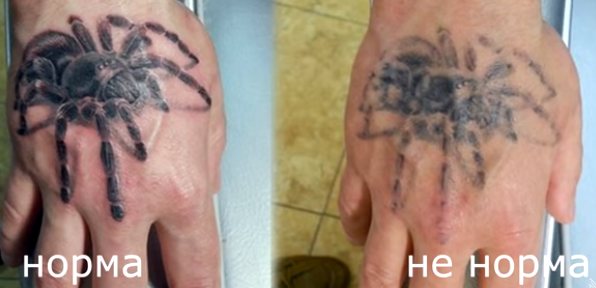

- The formation of scars and even scars.
- Blurring of the contours of the pattern.
- Appearance of a stable allergic reaction, which acquires a chronic form in the absence of treatment.
In addition to the classic methods of tattoo care, there are modern professional ways to speed up and facilitate the healing process, with which you will be acquainted by the master who applied the nail design.
Share this link:
Duration of Normal Healing
After a tattoo is applied, the normal process begins when the skin peels and itches. These are signs that the wounds are beginning to heal with the appearance of a crust. Touching these places with your hands, let alone trying to remove the crusts, is not allowed, so as not to cause distortion in the future color tone of the pattern.
The master always gives recommendations on how to take care of the tattoo, what to wash and lubricate to avoid inflammation. Immediately after padding a bandage is applied with a healing cream for 4-12 hours, depending on the complexity and size of the design.
After the bandage is removed, the tattoo is carefully washed with antibacterial soap without sponges, only with clean hands. It is naturally dried, and then covered with a thin layer of a special anti-inflammatory, healing ointment.
During the day, the smearing is repeated several times as it dries. Before going to bed everything is washed, lubricated again and a protective bandage is put on, which will be needed during the day if you need to go outdoors. Such treatment is carried out for three to four days.
Then, after showering the tattoo area wiped with special lotions. In this care, some peeling and accompanying itching are normal phenomena. The redness that appears immediately after the end of the piercing passes in about 6-12 hours, the swelling lasts up to two days.
The duration of complete clearing of the skin from the scabs is individual for each person, but on average at least a month. A concern is caused by an old tattoo, when redness and burning appears some time after healing. This can be a sign of infection.
Care Recommendations
The main thing in caring for a fresh tattoo is not to force its healing. The more expensive way is to buy a special film, which for the first week will reliably protect the tattoo from infection and other factors. A cheaper method is daily skin treatments.
Immediately after the tattoo is applied.
When the procedure is over, the master covers the tattoo with a film. This is necessary because it can fester if the infection gets into fresh skin lesions. Then the state of the tattoo will depend only on its owner.
A few hours after the procedure
The film should cover the tattoo for 4-8 hours. After that, it should be carefully removed for the first treatment. If it imprints the design and there is a small amount of paint, do not worry.
Skin care at home will consist of several points:
- remove the blood suds, and do not use loofahs or products containing alcohol;
- do not wipe with a towel - you can use a cotton pad or wait until it is completely dry;
- Apply cream or ointment;
- Cover the area with a film.
This procedure should be performed at least twice a day for the first 3 days after the procedure.
If the skin dries out very much, it is necessary to moisturize it more often.
If a tattoo does not heal
There are several recommendations on what to do if a tattoo does not heal. First, it is worth making sure that all recommendations for healing are followed and procedures are performed on schedule. In addition, the tattoo will not heal if the crusts are ripped off in the first few days. If the processes just go slowly, with no pain or swelling - this may be due to individual characteristics. If you suspect inflammation or processes of suppuration, it is worth consulting a dermatologist.
Possible infection
If, while complying with all the prescribed care procedures, an already lingering fresh tattoo is itchy and peeling, this becomes a reason to contact a dermatologist.
To understand independently that on a tattoo inflammatory process has begun, it is possible on tactile sensations of hot skin at touch to it the palm.
Gradually, the contours of the tattoo are surrounded by reddened areas, indicating additionally that the tattoo itches due to the development of an infection. After the prescribed therapeutic measures, everything gradually normalizes.
The tattoo is peeling a lot
This article talks about how to properly care for a fresh tattoo.
- Stages of healing
- Timely and proper care
- Healing preparations
Tattoo Healing, Features
Speaking about the stages of healing of the permanent mark of the skin, it is necessary to take into account that anatomical and physiological skin peculiarities of younger people differ from adults so the healing process can go much faster as trophic skin changes begin to progress after 30 years. It should also be noted that when choosing a tattoo-master should pay special attention to his previous work, work experience, relevant documentation and qualifications. These parameters are quite important for the procedure, and, accordingly, the further healing of your tattoo.
Stages of healing
- Emergence of exudate. A couple of days after ink application you can notice how the tattooed part of the skin swelled up and a liquid exudate appeared in the place of drawing, which can be absolutely colorless or contain some admixtures of color of the tattoo pigment itself.
Do not be alarmed, this process is physiological in the healing process. This stage lasts up to 2 days. - Thickening of the skin in the area of the drawing. This stage is also physiological, as a thick protective layer is formed. The duration of this stage is up to 4 days.
It is noteworthy that in no case can tear, scratch or in any other way traumatize the area with thickened skin, because there is a great risk of infection and scarring of the tattoo. - Exfoliation. Is the final stage of healing.
The tattooed area of the body dries up and may be a little itchy, resulting in peeling. The thickening gradually disappears and the surface layer of the skin begins to peel away.During this stage, minimal mechanical action is important, which can prolong the healing process, or risk infecting the skin. The time of this stage varies from 5 to 10 days.
Timely and proper care
Care is the most important part of healing, reducing the risk of infection, accelerating healing, and minimizing negative effects in the form of scarring.
The first days of care for a permanent modification are the most painful and require more attention. Immediately after the procedure a special ointment is put on the tattoo and a film is wrapped around the tattooed area.
Speaking of films, it is worth noting that to date there is a huge variety, ranging from simple food, ending with a special healing film. The latter is very convenient to use, as its removal and replacement can take place on day 5-6.
Remove the film very carefully, avoiding damage to the skin. If you are dealing with food - replace it 3-4 hours after the first application, pre-clean the skin with clean water and special antibacterial soap.
Then we apply healing ointments, the variety of which will be discussed below. After such treatment we again put on a clean film
Allergic reaction
One of the reasons why there is an itchy rash on the places where the tattoo was made, it is an allergy that occurs more often on the dye pigments, less often on the processing materials. In this case, manifest such a negative reaction may not occur immediately, and after some time.
In addition to rashes, symptoms of allergies are flares of redness on the tattoo, unpleasant pain, and fever. Possible swelling of the throat, making it difficult to breathe.
What to do in this situation can only tell you a doctor, although at the first obvious signs of allergy immediately take antihistamines. The exact cause is identified after examination, after which a set of therapeutic measures is prescribed. In complicated situations, tattoo removal is sometimes required.
Why crusts appear
The formation of crusts after permanent makeup of the eyebrows, lips, eyelids - this is a quite natural reaction of the body, which is an important part of regeneration.
During the tattoo, the master pierces the skin with a thin needle and introduces the pigment through it. The needle damages the epidermis, blood vessels, and connective tissues. In response, the skin reacts with natural protective processes, which appear as inflammation, redness, pain and swelling. At the same time a small amount of blood and lymph is released on the damaged skin. It is these that form the film, crusts or scabs that protect the skin during its recovery period.
On the result of permanent eyebrow make-up, the crusts have a very negative effect. The same is true for the lip and eyelid tattoo. The subsequent departure of the crust distorts the result of the master's work, leads to an uneven distribution of pigment, the formation of white spots and blurred contours. A competent specialist during the correction will analyze the situation and correct the deficiencies. However, it is much better to prevent the formation of a dense scab with competent care.
Exposure to ultraviolet radiation
If it itches quite an old tattoo, about a year after the performance, the cause may be a reaction to ultraviolet radiation. This is due to the structural formula of the ink. If they contain cadmium, when exposed to natural sunlight or artificial sunlight in a tanning bed, the puncture sites begin to lift and the surface becomes convex.
Rejection is mainly on red and yellow colors that contain cadmium. Sometimes the triggering factor is green ink containing chromium oxide, or orange, which contains selenium cadmium sulfide.
What can't I do?
Often the reason why the tattoo starts to itch a lot is the violation of a number of restrictions after it has been applied. You should not go to the sauna, warm in the sauna, take a bath, swim in the pool or an open body of water. This allows not to fall off prematurely formed crust and not to damage the drawing, when the new skin is formed after the tattoo in the area of punctures.
During two weeks sports activities are contraindicated in order not to load the muscles in the tattoo area. Try to avoid crowded places, going on picnics, cottages, in order to avoid contamination of the skin with dust.
When crusts come off after the tattoo
It is impossible to say exactly how long crusts after the eyebrows, lips and eyelids tattoo last. For each area of the face terms will be different. Struff will close the damaged area and prevent the penetration of infections for several days.The period of departure of the crusts also depends on age, immunity, hormonal background, the rate of metabolism and other factors.
However, there are indicative figures. For example, after the lip tattooing peeling stops in 7-10 days. After the eyebrows tattooing, you'll have to wait about 3-5 days when the film comes off. Skin recovery in the eyelid area takes about 4-5 days. In this case, the complete regeneration of any area requires about 3 weeks.
There is no need to worry if the pigment gets lighter and irregular after the crusts come off after permanent eyebrows, lips or eyelids makeup. Often about 40% of the shade comes out. The pigment will appear within the next 2-3 weeks and will be more pronounced. During correction, the beautician will remove flaws and choose the appropriate intensity of the color.
